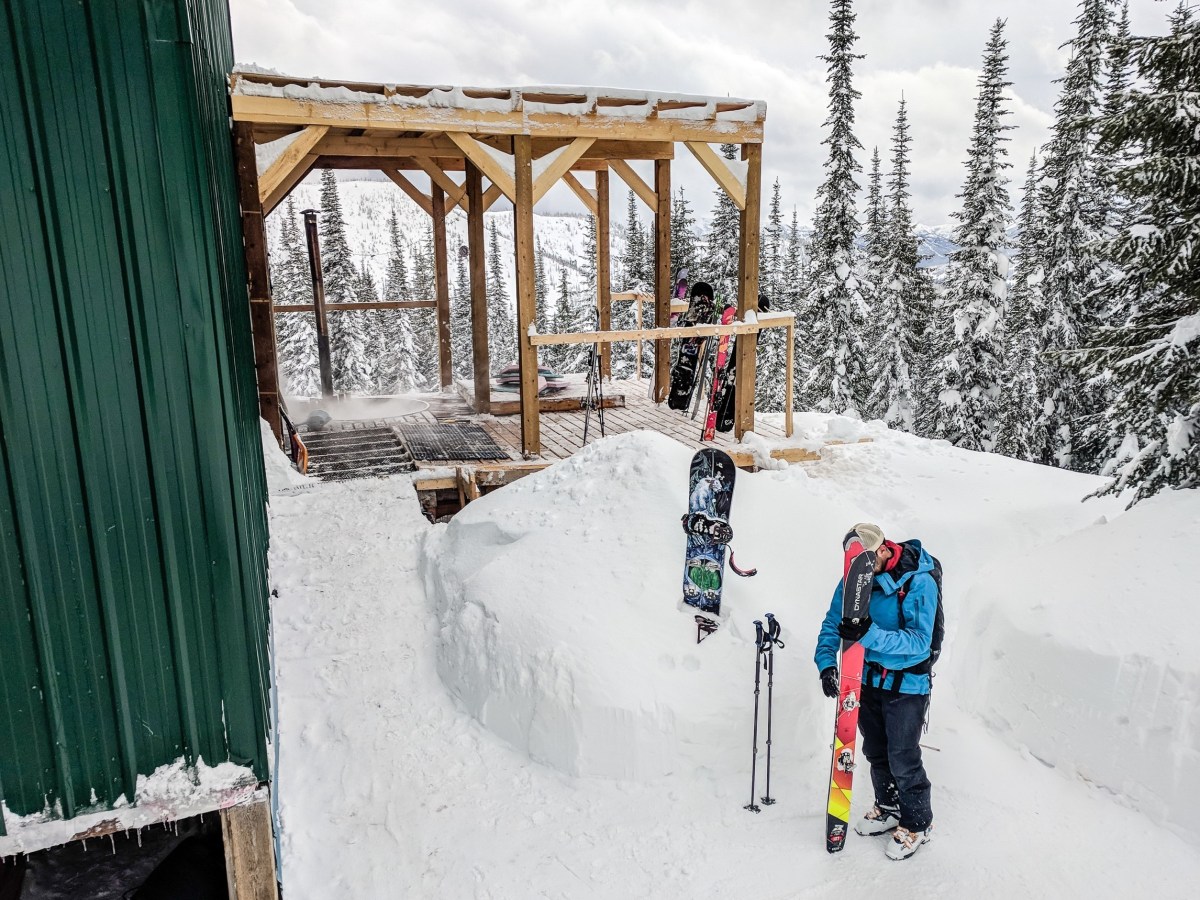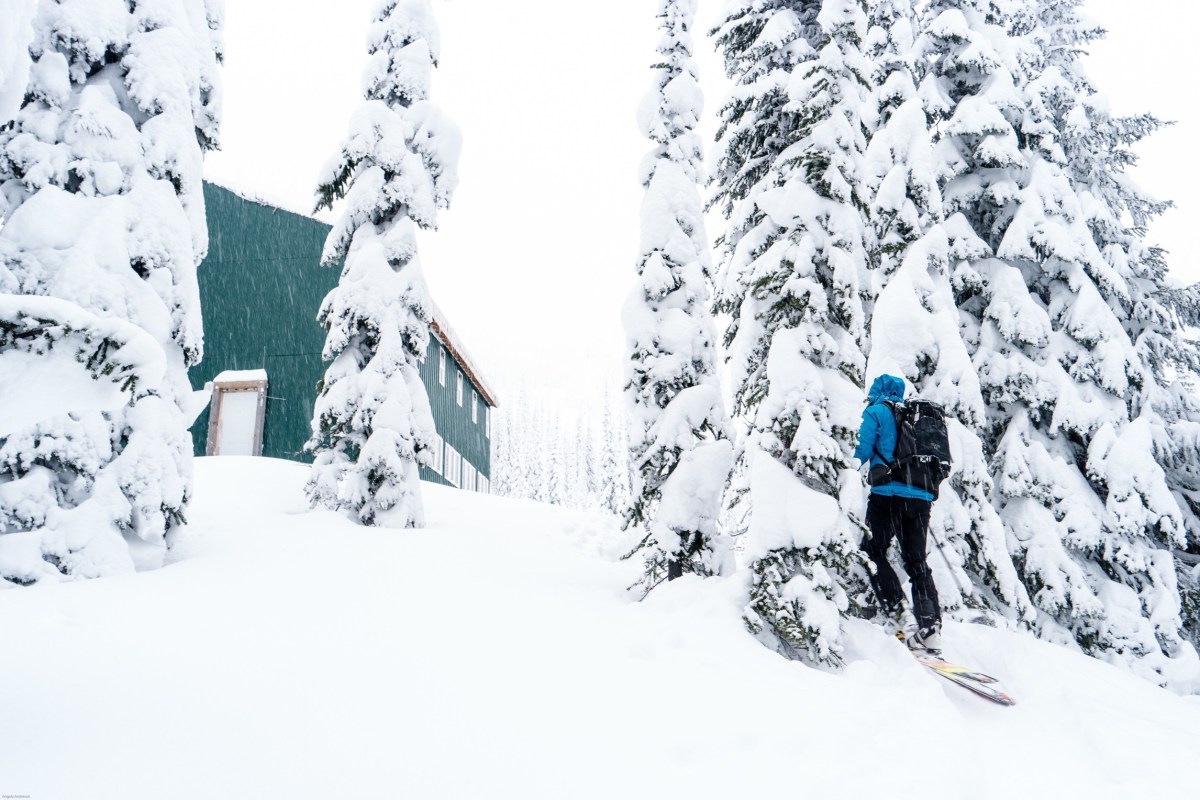There is magic in waking up in the middle of the wilderness, nestled among pine trees sparkling with a fresh layer of snow. Even better? Being warm and cozy in a backcountry hut, removed from civilization and ready to explore. The United States boasts a healthy array of backcountry hut and yurt systems that are jumping-off places for winter adventures.
Before you begin, there are quite a few things to know. I sat down with Mia Tucholke, a certified American Institute for Avalanche Research and Education (AIARE) instructor and assistant ski guide at Colorado Mountain School, to get the inside scoop on how to make your first backcountry hut trip a success.
Packing for Perfection
Many newbie hut enthusiasts bring too many things, which can make snow travel tedious and slow. First, be prepared for your particular sport; you’ll want different gear for snowshoeing than skiing. Tucholke recommends packing one outfit to wear for active adventures—including all of the appropriate layers—just like you might for a backpacking trip.
She also suggests bringing an extra set of base layers in case you get wet, plus a wicking midlayer, puffy layer and waterproof outer layers to keep moisture at bay. Lastly, you’ll want to ask the hut management about any additional gear you’ll need to bring that isn’t provided, like bedding, a cutting axe, trash bags (consider carrying a bag for recycling too), a bathroom kit or cooking supplies.
Pack your pack as you would for backpacking, keeping the heavier items closest to your back and toward the center of the pack, and the items you might need for the hike at the top. A 40-liter pack should be sufficient, unless you’re carrying lots of extra hut supplies or other special gear—like ropes and protection for mountaineering objectives. Keep in mind that the pack you wear to the hut will double as your day pack, so avoid bulk.
Of course, you won’t want to forget the Ten Essentials, as you are still traveling in the wilderness. “I don’t think you should leave the trailhead without basic emergency supplies, including a small tool kit for any gear that may require a field repair,” Tucholke says. Many of these items can be distributed among the group. Don’t forgo these necessities just to save weight.
In addition to the items mentioned above, Tucholke recommends that every person in the group carry the following:
- Bivvy/lightweight shelter
- Avalanche beacon, shovel and probe (with knowledge of how to use them properly)
- A map (digital and paper)
- Extra gloves
- The Ten Essentials (the first aid kit, knife and fire starters can be group items)
- Hand sanitizer
- Hand warmers (these are optional but handy—no pun intended—in a pinch!)
In addition to the essentials listed above, think about smaller items that would be handy to have. For women who may get their period during the trip, Tucholke recommends using a product like a Diva Cup, which is easy to pack in and out. If that doesn’t work for you, consider carrying a plastic baggie wrapped in duct tape with a little bit of baking soda sprinkled in the bottom—for the smell. Also, a urinary funnel can be helpful to avoid the freezing seats of outhouses or having to squat in the snow on the go.
For a complete list, read our Winter Camping Checklist.
Group Organization and Expectations
Before you head out, be sure you understand your group’s abilities and expectations. Choose a hut that is accessible for all group members. And, prior to reaching the trailhead, plan to discuss additional considerations such as how to distribute group gear and what communal activities you’ll participate in.
In some cases, “it helps to make a digital document for the group to follow along and keep organized from start to finish,” Tucholke says. This type of document can be helpful when delegating tasks and assigning group gear so everyone doesn’t bring everything. It also provides a place to write down where you plan to go and what you plan to do while at the hut. A key part of staying safe in the backcountry is making sure everyone has an opportunity to weigh in on decisions, so aim to create an environment where everyone is heard from the start.
Lastly, if you plan on traveling through avalanche terrain—whether skiing, riding, snow climbing or even snowshoeing,—Tucholke recommends investing in proper avalanche safety education. All participants should have their AIARE Level 1 certification, regardless of the planned activity, unless the hut can be easily accessed and 100 percent of the route avoids avalanche terrain. Furthermore, set time aside for all group members to practice avalanche rescue together before heading to the hut.
The Little Extras
A few luxury items can go a long way to keep you cozy once you arrive at your hut. Tucholke recommends packing a pair of “sacred socks,” or warm socks for sleeping. Also, hut slippers with hard rubber soles allow your feet to stay toasty and keep the snow out.
If you plan on building in a bunch of lounge time, consider packing an extra pair of long johns or base layers. Several huts house many people in one sleeping area; if this is the case on your trip, Tucholke recommends packing an eye mask and earplugs.

Hut Chore Tips and Tricks
Once you arrive at your cozy cabin, the chores begin! There is the tedious process of constantly melting snow for water, chopping wood and keeping the fire going. Groups can opt to delegate tasks, or everyone can pitch in when needed.
When it comes to firewood, keep in mind that hut stoves are often small and the wood you’ll use to keep warm can come in the form of large, rough-cut logs. Smaller pieces are perfect for the fire, so Tucholke recommends collecting the tiny bits for kindling when splitting wood. Keep the wood pile stocked throughout your stay so you aren’t fumbling around in the cold. And if you’re not cutting the wood, be the carrier who transports the fuel indoors to help out.
Keep cooking simple and tidy, advises Tucholke. Food can be a group or an individual endeavor, depending on your group dynamics. In order to avoid spoiled food, plan your hut meals as you would for a backpacking trip, by packing lightweight, nonperishable items that are high in carbs and fat. Heavy foods are a burden to carry and perishable items can quickly spoil, even in winter.
Animals present a nuisance even in winter, so follow the backcountry hut’s policy on food storage and waste disposal. When cooking, be sure there is plenty of ventilation. It can help to crack a window when you’re using a gas stove in order to avoid dangerous carbon monoxide buildup in the hut.
Snowmelt Techniques
In winter, lakes and streams are often frozen over, making melted snow your best choice for a water source. You’ll use melted snow for drinking water, cooking and cleaning. Most huts have a communal pot and ladle for melting snow. However, keep in mind that snowmelt is untreated, and it’s unrealistic to boil a pot of water that big. Tucholke recommends these techniques to keep your snowmelt supply as clean as possible:
- Collect snow from a designated area—some huts specify where. Be sure that everyone agrees to not brush their teeth, use the bathroom, walk or sit in that area. It’s for snow collection only!
- Put the pot over the stove to allow it to melt. You won’t get nearly as much water as snow, so this will be a constant chore. Fill up the snow pot before heading out for the day so you’ll have some water when you return.
- Never dip any container into the snowmelt pot, always use the designated ladle. Your container could be contaminated and taint the water source.
- Treating after melting is always a good idea, so bring your preferred treatment method such as a squeeze filter or UV light. If you use a pump filter, make sure you ladle the water out of a pot into a dirty container and don’t drop the hose right into the water source.
- If the water is hot, be sure to let it cool before using your treat. Treatinging hot water or placing hot water in a bladder can damage your water system.
Hut Hygiene
Living in close quarters can lead to illness if you’re not careful. Tucholke advises that you always use hand sanitizer before and after eating or handling food, going to the bathroom or cleaning. You’ll also want to follow hut protocols when it comes to cleaning dishware (and always use hot water and soap).
Most huts have an outhouse. These vary in quality, but they should always be used for bathroom needs. This helps ensure that snow collection stays sanitary, Tucholke adds.
Tracking snow into the hut is another concern. A wet floor can lead to injury. Be sure to regularly sweep snow out of the hut and do not wear shoes while in the hut (use those cozy slippers instead).
Tucholke advises cleaning up after meals in order to keep the hut tidy. Most huts have a written cleaning protocol regarding food waste. It is never okay to dump food scraps or cooking grease outside or in latrines. This practice invites rodents and other hungry critters. Instead, use a trash bag to dispose of any and all food waste.
Lastly, pack out all of your trash, including food, toilet paper, feminine hygiene products and any extra trash you find.

Be a Good Neighbor
Some huts offer private accommodations and others offer beds that a number of groups can reserve at one time. In either circumstance, be a good neighbor and travel with respect. Tucholke recommends a few simple things you should do to be neighborly:
- Don’t be a stranger! If you’re staying in a hut with other guests say “Hello” and be polite. If you are in a private hut with others nearby, it’s common courtesy to stop by and introduce your group.
- Be sure not to hog common areas such as heated areas, kitchen space or other special amenities.
- Keep noise to a minimum and respect the quiet hours.
- It is common courtesy to leave the hut with a full wood pile and water pot so the next guests can quickly make a fire when they arrive.
- Clean up after yourself in common areas, especially before you leave the hut.
- Conserve power. Use only the lighting you need and turn off all lights before leaving.
- Be an efficient cook. Don’t run propane stoves longer than necessary.
- Close up all doors and windows before you leave. Follow any security protocol the hut may have.
Backcountry huts offer a chance to experience pristine winter wilderness with a few creature comforts. These handy tips are intended to help you have a successful first backcountry hut experience. Respecting the house rules, being prepared for the unexpected emergency and adhering to Leave No Trace principles will allow you to have a positive experience and leave the hut comfortable for the next group.
